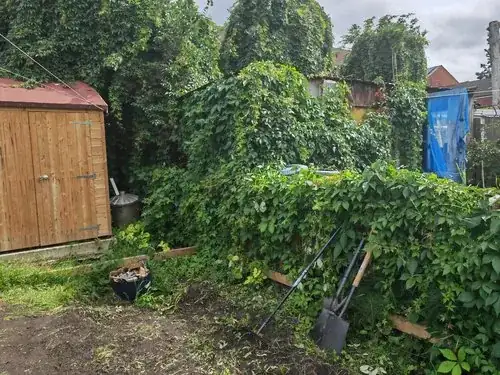There is some sort of creeping plant that is coming from behind the shed from another house and spreading into my garden. It is an extreme nuisance.
It has spread very fast this summer. Half of the fence on one side is completely covered. Its spreads like a web so it is hard to take it off.
What plant is this (Live in the UK)? How do I get rid of it and prevent it from coming back? It is not clear from where this plant has started creeping, it has come from someone else's home.


